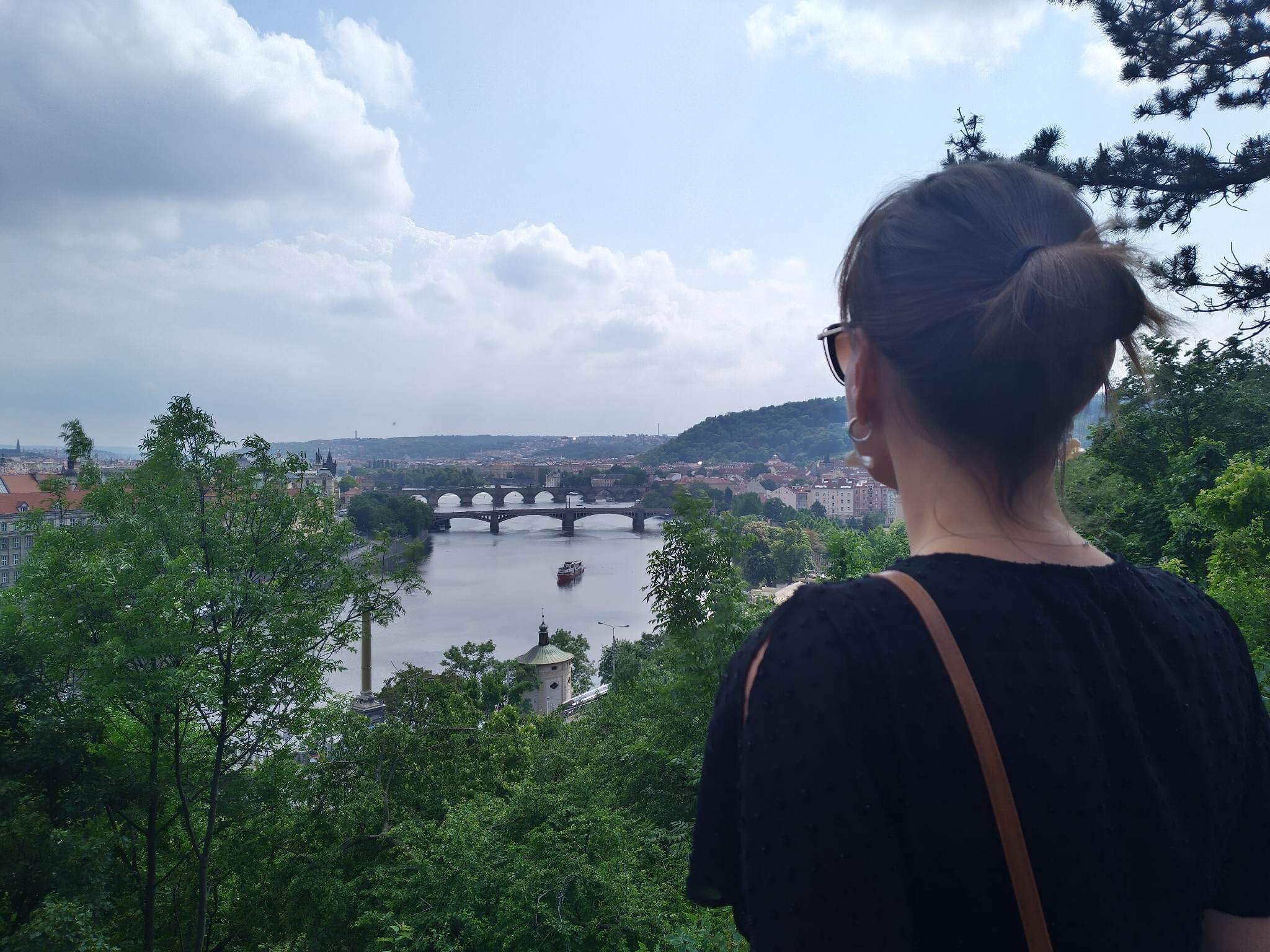How to find the best art in Prague, The Czech Republic
I have a deep appreciation for Prague. It is a city that exudes romance, tranquility, and a rich tapestry of history. Over centuries, its inhabitants have remained committed to nurturing its culture and the arts.
Prague, with its diverse history of rule by Czech, German, and Austrian dynasties, has been repeatedly chosen as a seat of imperial power, which nurtured its flourishing of artistic scene. This geopolitical significance shielded the city from the ravages of various European wars and preserved architectural styles that span over 1000 years. Within a short walk, you can witness over a millennium of European architectural evolution, making Prague a truly unique destination. Prague boasts distinctive Cubist architecture not found elsewhere.
While we won't delve into the intricate details of Prague's architecture here (numerous online resources can provide that information ARTICLE 1 ARTICLE 2 ARTICLE 3 ARTICLE 4), we will shed light on another captivating facet of this city.
Despite long periods of German, Austrian, and later Soviet control, Prague and its people managed to preserve their distinct identity, language, and culture. Emperors may have governed the land and cities, but they didn’t subdue the Czech spirit, intellect, and creativity. The behavior of the Prague residents might have appeared as compliance for purely survival purposes, but underneath it was often a resolute refusal to compromise their true selves. As the Czech language throughout its history faced suppression from other languages, it kept being reinforced with notable translations, including the Bible, to safeguard its existence. Czech culture and spirit thrived through literature, storytelling, and, later, filmmaking.
Karel Čapek, a seven-time Nobel Prize in Literature nominee, famously coined the term 'robot' in his book "War with the Newts," which later found its way into mainstream technology. Vaclav Havel, the first democratically elected president, was a playwright whose book "The Power of the Powerless" examined the impact of the communist regime on ordinary citizens and their collective resistance. Milos Kundera's "Unbearable Lightness of Being" is another significant work that challenged the Soviet regime.
Czech literature, theater, and film served as both a rebellion against oppression and a documentation of the horrors of the wars. With a particular focus on the fate of the Jewish community that had a presence in Czech lands since the 10th century, notable works like ""Divided We Fall”" by Jan Hrebejk and the Oscar-winning "Shop on the Main Street" by Jan Kadar & Elmar Klos explored the complex choices faced by ordinary Czech, Slovak, Jewish, and German people under the Nazi rule. The moral dilemma of whether to protect their Jewish neighbors or prioritize their own survival resonated deeply. Matej Minac's film, "All My Loved Once," portrayed the heroic efforts of Sir Nicholas Winton in aiding Jewish people escape Nazi-occupied Czechia. Sir Winton was awarded the Nobel Peace Prize for saving 669 Jewish children, most of whom were the sole survivors of their families.
Literature and films served as a bulwark for Czech culture under oppressive regimes, offering a means to resist external pressures and a refuge from the grim realities of life into dream-like realities. One contemporary filmmaker, Jan Svankmajer, has earned acclaim with 36 international awards and 17 nominations, combining film, theater, and abstract work that intersects with visual arts.
The rich history seen in Prague's architecture, the resilience displayed by the Czech people, their defiance and search for meaning amid adversity (the famed Franz Kafka was born and lived in Prague and Sigmund Freud, the founder of psychoanalysis, was born in the CR), as well as their profound appreciation for life's simple pleasures, are all mirrored in the city's vibrant visual arts scene.
Art Tour Through Prague:
Academy of Fine Arts in Prague (AVU): Central Europe's premier art school, which allows public visits at their gallery. You can also enjoy a beer in its students' underground bar and relax in its garden.
The Prague Library: A spacious gallery showcasing contemporary artists. We had the opportunity to view the works of Czech painter and former AVU professor Jitka Svobodova.
Rudolfinum: A stunning historic building dedicated to both visual arts and music.
Stromovka: Prague's largest and most picturesque city park, featuring modern sculptures and beautifully landscaped gardens and ponds.
The National Gallery Prague, An expansive art space where you can happily lose yourself for hours in its comprehensive collection.
Dox: A versatile art space that exhibits contemporary art and offers a MOMA-style cafe with outdoor seating, a gift shop, and co-working spaces for artists.













